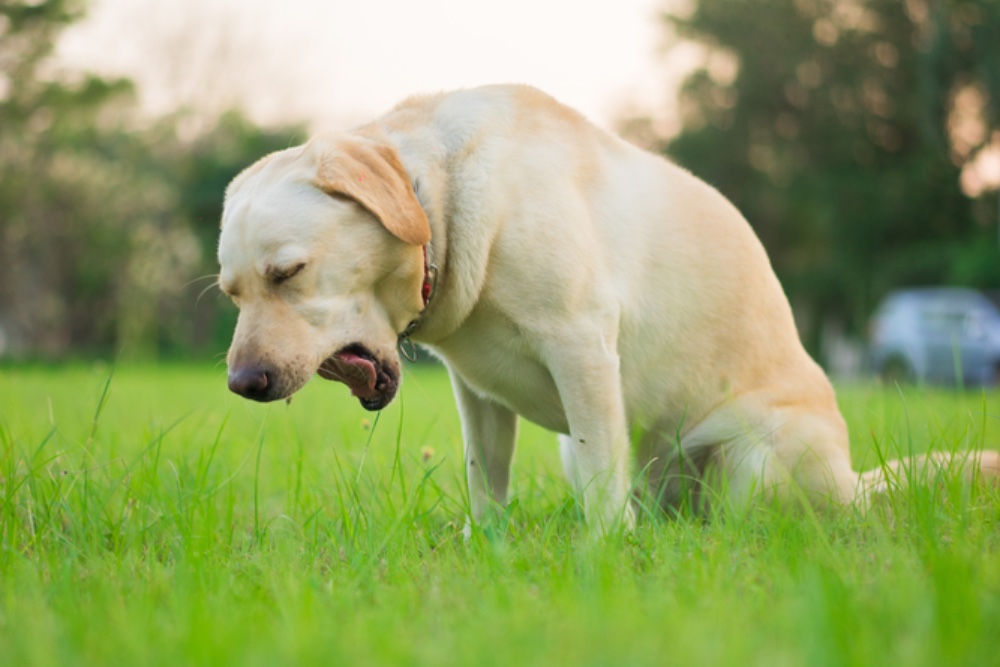
Introduction
The bond between humans and dogs is a profound and cherished connection, marked by loyalty, companionship, and shared moments of joy. However, this relationship can take a heartbreaking turn when our beloved canine companions fall ill. One distressing scenario that some dog owners may encounter is the sudden onset of vomiting, particularly when it involves the expulsion of yellow liquid. In even more tragic instances, this alarming symptom may be followed by the devastating loss of the furry family member. In this article, we will delve into the complexities of canine health, exploring the possible causes behind a dog throwing up yellow liquid and the unfortunate outcome that some pet owners may face.
Understanding Canine Vomiting
Vomiting in dogs is a common and complex symptom that can have various underlying causes. While occasional vomiting may not be a cause for immediate concern, persistent or severe episodes demand prompt attention from pet owners and veterinary professionals. Before exploring the potential reasons behind a dog throwing up yellow liquid and the tragic outcome of such cases, it is crucial to understand the broader context of canine vomiting.
- Normal Reasons for Vomiting: Dogs may vomit for various reasons, some of which are relatively benign. These can include dietary indiscretions, rapid consumption of food or water, or mild gastrointestinal disturbances. In these cases, vomiting is often a natural response to rid the digestive system of irritants or excess substances.
- Underlying Medical Conditions: Persistent or recurrent vomiting, especially when accompanied by other symptoms such as lethargy, changes in appetite, or weight loss, may indicate an underlying medical condition. Gastrointestinal issues, organ dysfunction, infections, and systemic diseases are among the potential causes that necessitate thorough veterinary investigation.
- Foreign Body Ingestion: Dogs are notorious for their curious nature, and sometimes this curiosity leads them to ingest objects that can obstruct their digestive tract. Foreign body ingestion can result in vomiting, abdominal pain, and, if left untreated, serious complications.
- Toxic Ingestion: Ingesting toxic substances, whether intentionally or accidentally, can lead to severe health issues in dogs. Some common household items, plants, and certain human foods are toxic to dogs and can cause vomiting, among other symptoms.
- Parasitic Infections: Parasites such as worms or protozoa can compromise a dog’s gastrointestinal health, leading to vomiting and other digestive disturbances. Regular deworming and preventative measures are essential for maintaining a dog’s well-being.
Yellow Liquid in Dog Vomit: Possible Causes
When a dog vomits yellow liquid, it often raises concerns among pet owners due to its distinct color and potential implications. The yellow coloration is typically attributed to bile, a digestive fluid produced by the liver and stored in the gallbladder. Bile plays a crucial role in the digestion and absorption of fats. Understanding the potential causes behind the presence of yellow liquid in dog vomit is essential for addressing the underlying issues.
- Bilious Vomiting Syndrome: Bilious vomiting syndrome occurs when a dog’s stomach is empty for an extended period, leading to the secretion of bile. This is often observed in dogs that go without food for an extended duration, such as those with irregular feeding schedules or those that skip meals.
- Gastrointestinal Issues: Various gastrointestinal issues, including gastritis, inflammatory bowel disease (IBD), or gastric ulcers, can result in the production of yellow vomit. These conditions may cause irritation and inflammation in the digestive tract, leading to the expulsion of bile.
- Liver or Pancreatic Disorders: Liver or pancreatic disorders can impact the production and flow of bile, resulting in its accumulation in the stomach. Conditions such as liver disease or pancreatitis can cause yellow liquid vomit and require immediate veterinary attention.
- Intestinal Obstruction: In cases where a dog has ingested a foreign object or is suffering from an intestinal blockage, the expulsion of yellow liquid may occur. Intestinal obstructions can be life-threatening and necessitate urgent veterinary intervention.
- Systemic Infections: Serious infections affecting the gastrointestinal system or other organs can lead to yellow vomit. Infections may result from bacteria, viruses, or parasites and require prompt diagnosis and treatment.
Tragic Outcomes: Loss and Grieving
The distressing scenario of a dog throwing up yellow liquid and subsequently succumbing to illness is a heartbreaking experience for any pet owner. The grief associated with the loss of a beloved canine companion is profound, and understanding the potential factors contributing to such outcomes can provide a sense of closure and awareness.
- Delayed Veterinary Intervention: In some cases, the tragic outcome may be attributed to delayed veterinary intervention. When symptoms such as vomiting, lethargy, or changes in behavior are not addressed promptly, the underlying condition may progress to a critical stage, diminishing the chances of successful treatment.
- Severe Underlying Conditions: Certain medical conditions, such as advanced stages of cancer, organ failure, or irreversible diseases, may contribute to a dog’s deteriorating health. Unfortunately, despite the best efforts of veterinary professionals, some conditions may have limited treatment options.
- Toxic Ingestion: If the cause of vomiting is linked to toxic ingestion, the severity of the ingested substance can play a significant role in the outcome. Some toxins can cause irreparable damage to organs, leading to a devastating prognosis.
- Complications from Treatment: In some instances, complications arising from medical treatments, surgeries, or interventions may contribute to a tragic outcome. Despite the best intentions of veterinary professionals, unforeseen complications can occur.
Grieving Process for Pet Owners
The loss of a beloved pet is a deeply emotional experience, and pet owners often find themselves navigating the stages of grief similar to those experienced when losing a human loved one. Understanding and acknowledging the grieving process can help individuals cope with the profound sadness and sense of loss.
- Denial and Shock: Initially, pet owners may experience a sense of denial and shock, struggling to come to terms with the sudden loss of their canine companion. This phase is characterized by disbelief and an emotional numbness.
- Anger and Guilt: As reality sets in, feelings of anger, guilt, and self-blame may arise. Pet owners may question whether they could have done more to prevent the loss or harbor feelings of frustration towards the circumstances.
- Depression: The depression phase is marked by overwhelming sadness, a deep sense of loss, and a profound longing for the departed pet. This phase may be accompanied by changes in appetite, sleep disturbances, and a lack of interest in previously enjoyed activities.
- Acceptance and Moving Forward: Over time, with support from friends, family, or professional counseling, pet owners may reach a stage of acceptance. While the pain of loss may never fully dissipate, individuals can learn to cherish the memories of their departed pets and find ways to move forward.
Preventive Measures and Responsible Pet Ownership
While not all instances of canine vomiting can be prevented, responsible pet ownership involves taking proactive measures to safeguard a dog’s health and well-being. Implementing preventive strategies can significantly contribute to the early detection and management of potential health issues.
- Regular Veterinary Check-ups: Scheduled veterinary check-ups are crucial for monitoring a dog’s overall health and detecting any potential issues before they escalate. Routine vaccinations, dental care, and preventive screenings contribute to the well-being of canine companions.
- Balanced Nutrition: Providing dogs with a balanced and nutritious diet tailored to their specific needs is essential for maintaining optimal health. Avoiding the feeding of toxic foods, such as chocolate, onions, and grapes, helps prevent ingestion-related illnesses.
- Parasite Prevention: Regular deworming and the use of preventive measures against fleas, ticks, and other parasites contribute to a dog’s gastrointestinal health. Parasitic infections can lead to vomiting and other digestive disturbances.
- Safe Environment: Creating a safe environment for dogs involves securing household items that may be harmful if ingested. Keeping toxic substances out of reach, providing appropriate chew toys, and monitoring a dog’s surroundings reduce the risk of accidental ingestion.
Conclusion
The experience of a dog throwing up yellow liquid and, tragically, succumbing to illness is a deeply distressing ordeal for pet owners. Understanding the potential causes behind such occurrences, including bile-related vomiting and underlying health conditions, is crucial for fostering awareness and responsible pet ownership. While the loss of a cherished canine companion is undeniably painful, the grieving process is a testament to the profound impact that dogs have on the lives of their human counterparts.
Navigating the stages of grief, seeking support from loved ones, and commemorating the cherished memories of departed pets are essential components of healing. By embracing responsible pet ownership practices, including regular veterinary care, preventive measures, and a commitment to a dog’s overall well-being, pet owners can contribute to the longevity and quality of life of their beloved furry friends. Despite the challenges and heartbreak associated with the loss of a pet, the enduring love and companionship shared with canine companions remain etched in the hearts of those who have had the privilege of being touched by the paws of a loyal friend.



